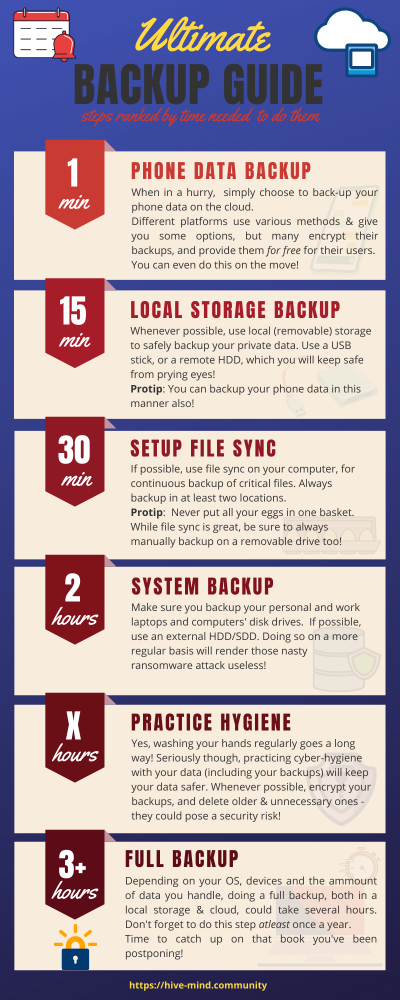According to the European Union Agency for Cybersecurity (ENISA), the second most widespread types of cyber-attacks in 2020 (following malware attacks) were, you guessed it, ransomware attacks. They accounted for almost one third (28%) of the total number of incidents. Although the common targets of ransomware attacks are larger companies and corporate actors, as well as more worryingly, healthcare institutions and companies, yet still it won’t hurt to make sure our personal data is secure, too.
The easiest way to ensure that we are safe from ransomware attacks is through regular backups of our data - the so-called data backup. Although reinforcing it will not make you immune to this type of attack in case our data is compromised, keeping a recent backup might drastically reduce the damage done. According to the National Center for Computer Incident Response (MKD-CIRT), which operates within the Agency for Electronic Communications (AEC) of North Macedonia, only 50% of citizens regularly back up their data, and only 11% make regular backups (once per week) of their most important data.
See our quick and simple guide on how to back up your data below.
Important: in your work environment, make sure you consult relevant IT department before making any changes to your devices. If there is none, consult your management about your internal policies. Some of the steps in the recommendations may be too technical and outside your comfort zone, so we encourage you to get help from an IT professional if you feel the need.

Background illustration: Photo by Zephyr18 from iStock / iStock license